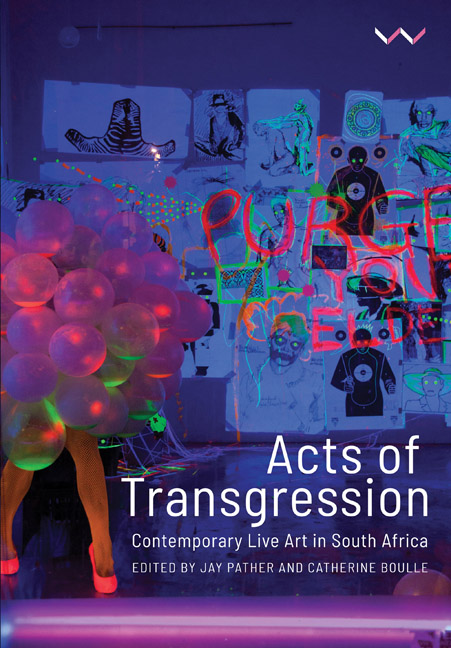Book contents
- Frontmatter
- Contents
- Acknowledgements
- Introduction
- PART ONE LIVE ART IN A TIME OF CRISIS
- PART TWO LOSS, LANGUAGE AND EMBODIMENT
- PART THREE RETHINKING THE ARCHIVE, REINTERPRETING GESTURE
- PART FOUR SUPPRESSED HISTORIES AND SPECULATIVE FUTURES
- 12 To Heal a Nation: Performance and Memorialisation in the Zone of Non-Being
- 13 Astronautus Afrikanus: Performing African Futurism
- 14 ‘Touched by an Angel’ (of History) in Athi-Patra Ruga's The Future White Women of Azania
- 15 Performance in Biopolitical Collectivism: A Study of Gugulective and iQhiya
- Contributors
- List of Illustrations
- Index
12 - To Heal a Nation: Performance and Memorialisation in the Zone of Non-Being
from PART FOUR - SUPPRESSED HISTORIES AND SPECULATIVE FUTURES
Published online by Cambridge University Press: 30 May 2019
- Frontmatter
- Contents
- Acknowledgements
- Introduction
- PART ONE LIVE ART IN A TIME OF CRISIS
- PART TWO LOSS, LANGUAGE AND EMBODIMENT
- PART THREE RETHINKING THE ARCHIVE, REINTERPRETING GESTURE
- PART FOUR SUPPRESSED HISTORIES AND SPECULATIVE FUTURES
- 12 To Heal a Nation: Performance and Memorialisation in the Zone of Non-Being
- 13 Astronautus Afrikanus: Performing African Futurism
- 14 ‘Touched by an Angel’ (of History) in Athi-Patra Ruga's The Future White Women of Azania
- 15 Performance in Biopolitical Collectivism: A Study of Gugulective and iQhiya
- Contributors
- List of Illustrations
- Index
Summary
On either end of High Street in Grahamstown, in the Eastern Cape, sits the Cathedral of St Michael and St George and the Drostdy Gateway, the entryway into Rhodes University. As such, High Street is marked by the two pillars of western hegemony: knowledge and religion. Along this axis, there are monuments that attest to a history of conquest. This scene provided the backdrop for Sikhumbuzo Makandula's performance Ingqumbo (‘Wrath’) on 17 September 2016, which began with Makandula burning his altar boy uniform. Makandula's site-specific provocation of religion and history brought to mind an impression gleaned from the seven years I spent as chief curator of three memorial sites in Soweto: in South Africa, there is a belief that tangible and intangible symbols are required, as well as narratives about what is distinctive about the nation, for the idea of nationhood to hold. One such narrative has been the process of national reconciliation – a central theme in post-1994 nation-building. Memorials and commemorative events weave symbols and narratives together in the hope of inspiring patriotism.
In this chapter, I argue that these forms of memorialisation have not been successful in forging a unified national identity. My focus here is on a mistrust of the founding narrative of national reconciliation; the disjuncture between the high ideal of a prosperous nation and the continued marginalisation and dispossession of Black people; and state-adopted commemorative practices that do not speak sufficiently to an embodied knowledge of historical events and our interpretation of these events in the present. The work of artists like Makandula and others, explored below, provide fertile ground for critiquing current modes of memorialisation, as well as the very notion of nationhood. But they also suggest different ways of remembering. Drawing on traditional African religious practices in order to retrace the relationship between the physical and the metaphysical realms (suturing the relationship between the political and the spiritual) and to bring different vocabularies to our visual culture, these artists instantiate counter-narratives of memorialisation and mourning that work against a post-1994 memorial culture, which eclipses and erases complex histories and the influence of traditional practices.
Information
- Type
- Chapter
- Information
- Acts of TransgressionContemporary Live Art in South Africa, pp. 267 - 285Publisher: Wits University PressPrint publication year: 2019
